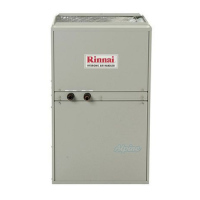
Do you have a question about the Rinnai 37AHB SERIES and is the answer not in the manual?
| Model | 37AHB SERIES |
|---|---|
| Category | Furnace |
| Fuel Type | Natural Gas |
| Blower Motor | ECM |
| Vent Type | Direct Vent |
| Thermostat Compatibility | Standard |
| Warranty | 10-Year Parts, Limited Lifetime Heat Exchanger |
| Efficiency | High Efficiency |
| Stages | Two-Stage |
| Ignition Type | Direct Spark |
Defines safety alert symbols and signal words used in the manual.
Outlines essential safety precautions and general warnings before starting work.
Introduces the Rinnai Hydronic Furnace and its features for residential and commercial use.
Emphasizes installer's responsibility to comply with codes and local ordinances.
Instructions for identifying the unit using model and serial number from the name plate.
Procedure for inspecting the unit upon delivery for any shipping damage.
Lists important notes regarding furnace installation and configuration.
Describes general considerations for furnace placement and multi-position installation.
Details requirements for installing the furnace in an upflow configuration.
Details requirements for installing the furnace in a downflow configuration.
Explains installation for horizontal airflow, with or without a cased coil.
Provides guidance for installing the furnace in a closet space.
Outlines methods for suspending the furnace cabinet if frame support is not feasible.
Describes two methods for securing the furnace using straps.
Covers connecting ductwork and inspecting air distribution systems.
Illustrates improper furnace orientations that are not allowed.
Details how to connect supply and return ducts and information on filters.
Covers local codes, material requirements, and general plumbing practices.
Specifies procedures and torque limits for installing the flow sensor.
Discusses using lead-free solder for domestic water supply connections.
Guides on insulating and supporting copper tubing for heat loss and expansion.
Explains how to manage piping expansion to prevent noise and damage.
Explains how to determine hydraulic resistance of components using equivalent lengths.
Provides guidance on selecting pipe sizes based on flow velocity and noise.
Stresses the necessity of expansion tanks for hydronic systems to manage pressure changes.
Details the steps to calculate the total equivalent pipe length for a system.
Provides notices on pipe length limits, insulation, and flow direction.
Discusses open loop vs. closed loop systems and Rinnai's product certifications.
Provides a step-by-step procedure to purge and prime the system without a purge cart.
Outlines electrical connection requirements based on NEC and Canadian codes.
Includes warnings about power disconnect and potential electrical hazards.
Provides instructions for moving the control box to an alternate location.
Details the field wiring diagram and connections to the control box.
Explains 24V control system connections and low voltage wiring for thermostats.
Illustrates low voltage wiring configurations for thermostats and accessories.
Provides guidelines on wire gauge and maximum distance for low voltage wiring.
Details the layout and connections of the furnace's control board.
Explains how to configure the unit's operating system using dip switches.
Provides safety advice and mounting guidelines for thermostat installation.
Shows wiring configurations for various thermostat types and system setups.
Explains the selectable operating sequence options using the 3-pin shunt header.
Details the necessary steps and conditions before starting the furnace in heating mode.
Provides common issues and solutions for blower and pump motor operation.
A flowchart guiding the start-up process and initial troubleshooting.
Troubleshooting guide for blower system issues with 115V power.
Troubleshooting guide for circulating pump issues with 115V power.
Troubleshooting guide for 24V system issues related to thermostats and PCB.
Describes the furnace's state when no thermostat demand is present.
Explains furnace operation during single-stage and two-stage A/C or Heat Pump cooling demands.
Details furnace operation for heating, including circulating pump and blower control.
Explains blower delays and pump behavior during heating demand changes.
Covers single-stage, second-stage, and emergency heat operation for heat pumps.
Provides instructions for cleaning the furnace's compartments and air passages.
Recommends annual inspection of air ducts for blockages or damage.
Notes that fan and pump motors are permanently lubricated and require annual cleaning.
Step-by-step guide for replacing the circulator pump motor assembly.
Outlines the process for sizing the hydronic furnace and tankless water heater.
Provides a step-by-step guide for selecting the correct unit size and capacity.
Advises using ACCA Manual J for accurate load calculations.
Explains how to calculate total external static pressure for system design.
Discusses considerations for designing high velocity air delivery systems.
Lists general rules for duct joint sealing, duct shape, and fitting selection.
Covers critical factors for designing high velocity duct systems, including take-off points.
Provides a chart for quick reference on hi-velocity duct sizing based on airflow and leg count.
Lists parts for the overall unit assembly, cross-referenced by model.
Lists parts for the control panel assembly.
Lists parts for the blower assembly.
Section for recording purchase and installation details for warranty purposes.
Defines the scope of Rinnai's limited warranty for materials and workmanship.
Specifies the duration of warranty coverage for parts and labor.
Outlines Rinnai's responsibilities for repair or replacement of defective products.
Explains the process for obtaining warranty service and proof of purchase requirements.
Lists exclusions from warranty coverage, including operational failures and misuse.
Details limitations on implied warranties and liability for damages.
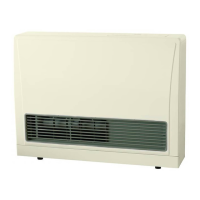
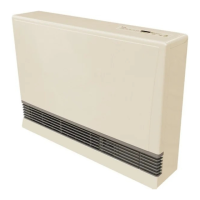
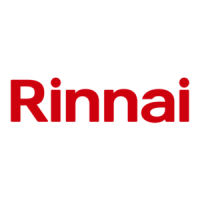

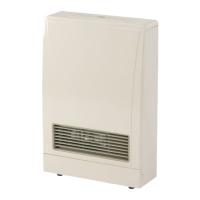


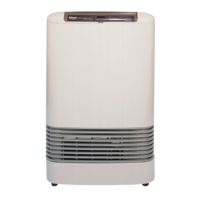
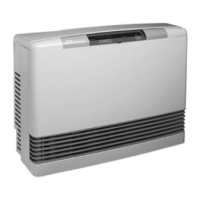
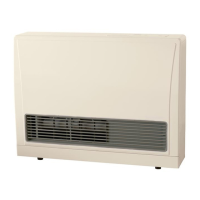

